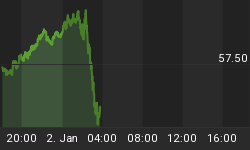First we had the dot-com bubble, then the housing bubble and next on stage is the national debt bubble. The national debt has entered a bubble stage which will bring higher interest rates in its wake. In March 2010, the Congressional Budget Office (CBO) projected that the national debt would grow from 63% of Gross Domestic Product (GDP) in 2010 to 90% in 2020. CBO Director Doug Elmendorf has called this rapid projected increase an unacceptable threat to our nation's economy. Economists Kenneth Rogoff of Harvard and Carmen Reinhardt of the University of Maryland recently published a book indicating that a 90% debt/GDP ratio usually touches off a crisis. The last time the United States experienced such a debt level was during World War II.
While the CBO projection is grim, the reality may be worse. The CBO assumed that the annual growth of GDP during the coming decade would revert to its average over the past quarter century. Some prominent economists and investment managers argue that such an assumption is overly optimistic. Nobel Laureate Paul Krugman suggested in a May 2010 New York Times editorial that we are likely to face a lost decade with lower than normal growth and higher than normal unemployment. Bill Gross, the head of the largest bond mutual fund, has been widely cited for his thesis that the United States has entered a "new normal," where GDP growth will be sub-par for years to come. He has predicted GDP growth in the 2% range; while 3% is generally consider the minimum needed to achieve sustainable growth.
If Krugman and Gross are right, the debt/GDP ratio will reach 90% sooner, perhaps far sooner, than the CBO projects. Lower growth will result in significantly less tax revenue than projected by the CBO. Lower growth will also require higher than projected fiscal expenditures for a variety of support programs such as Medicaid.
Political leaders across the ideological spectrum - President Obama, Federal Reserve Chair Ben Bernanke, Senator Mitch McConnell, former Federal Reserve Chair Paul Volker, Speaker Nancy Pelosi - have indicated that we must take on this debt crisis. However, meaningful solutions require inflicting pain by way of higher taxes and/or sizable spending cuts. Such solutions are politically toxic. Thus the response is likely to be inadequate.
President Obama, like his predecessors, has passed the ball to a commission instead of proposing a program. The commission seems unlikely to succeed. The Republican Party blocked congressional approval for the commission, forcing President Obama to create it by Executive Order. This opposition does not bode well for necessary Republican co-operation to implement the commission's proposals, especially since Republicans are likely to gain seats in the fall elections. Further, the requirement that 14 of the 18 commission members approve any proposal will make progress highly difficult. The most talked about proposal is a European-style value added tax. The creation of such an entirely new tax system on top of those currently in place is likely to be met with fierce opposition. At best, the Commission and Congress are likely to take half steps that will slow but not prevent the unacceptable growth in the debt/GDP ratio
Add a growing debt/GDP ratio to an inadequate response by Congress and the Executive, and the result is likely to be higher interest rates on government debt. Such higher rates will amount to a tax on the entire economy. Over the past decade foreign sources have been willing to take on an ever larger proportion of our national debt. To assure that they keep lending in the future, especially in an environment where the debt/GDP ratio is accelerating, the United States will likely have to offer higher interest rates. Further, as the debt/GDP ratio rises, both bond vigilantes and general investors will demand higher interest rates because of the increased risk such lending entails.
Focus on the debt/GDP ratio is intensifying. The Euro crisis has turned the spotlight on national debt problems. In the United States, public attention is likely to increasingly focus on the debt commission. The debt issue may dominate the mid-term elections this fall. All of this attention will broaden public awareness of the precarious nature of our national finances and the risk of higher interest rates.
The takeaway for investors: Two factors combine to suggest that bond rates in the coming decade must rise: (1) bottoming out of the federal funds cycle, from 20% in 1981 to near zero at present; (2) rapid growth in the debt/GDP ratio and the probability of an inadequate governmental response. As Bill Gross has indicated, "Bonds have seen their best days."















